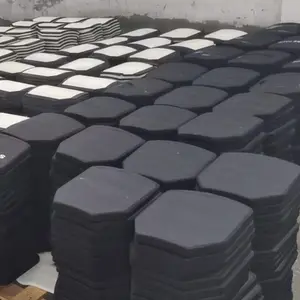Top categories

Energy Chemicals

Flavor & Fragrance

Chemical Reagents

Non-Explosive Demolition Agents

Other Chemicals

Custom Chemical Services

Biological Chemical Products

Painting & Coating

Surface Treatment Chemicals

Catalysts & Chemical Auxiliary Agents

Admixture & Additives

Pigments & Dyestuff

Basic Organic Chemicals

Agrochemicals

Inorganic Chemicals

Coating & Paint
About products and suppliers
Introduction to Alumina Plates
Alumina plates, known for their robustness and versatility, are a cornerstone in the realm of advanced ceramics. These plates are crafted from aluminum oxide, which is a material renowned for its thermal stability, strength, and electrical insulation properties. The category encompasses a range of products, including alumina ceramic plates, aluminum oxide ceramic plates, and porous alumina plates, each serving distinct applications across various industries.
Types and Applications
The diversity of alumina plates is evident in their types and applications. Standard flat plates are widely used in electronic device manufacturing due to their excellent insulation properties. In contrast, porous alumina plates are sought after in filtration and separation processes, where their permeable nature is beneficial. The adaptability of these ceramics makes them suitable for a multitude of industrial uses, from high-temperature environments to wear-resistant surfaces in machinery.
Features and Materials
An alumina ceramic plate is characterized by its impressive mechanical strength and thermal conductivity. The material's composition, primarily of aluminum oxide, contributes to its notable resistance to corrosion and wear. This resilience makes alumina plates ideal for use in environments where durability and longevity are paramount. Additionally, the non-porous nature of high-density alumina plates ensures they are impermeable to gases and liquids, which is critical in many scientific and industrial applications.
Advantages of Alumina Ceramic Plates
The advantages of utilizing alumina plates are manifold. Their ability to withstand extreme temperatures without compromising structural integrity is unparalleled. This thermal stability, coupled with a low thermal expansion coefficient, renders them indispensable in high-temperature applications. Furthermore, the electrical insulation properties of aluminum oxide ceramic plates are beneficial in electronic industries, where they serve as crucial components in insulators and substrates.
Considerations for Selection
Selecting the appropriate alumina plate requires consideration of several factors, including material density, porosity, and thermal resistance. For applications demanding high strength and minimal porosity, a fully dense alumina ceramic plate would be the optimal choice. Conversely, applications that require filtering or diffusing would benefit from a porous alumina plate. It is essential to match the specifications of the plate to the intended application to ensure optimal performance.
Conclusion
In conclusion, alumina plates offer a spectrum of solutions for challenging industrial applications. Their exceptional properties and wide-ranging types cater to a plethora of specialized needs. While the platform facilitates connections between buyers and a multitude of suppliers, it is advisable for buyers to conduct thorough research to identify the most suitable alumina-based ceramic solutions for their specific requirements.
























 浙公网安备 33010002000092号
浙公网安备 33010002000092号 浙B2-20120091-4
浙B2-20120091-4